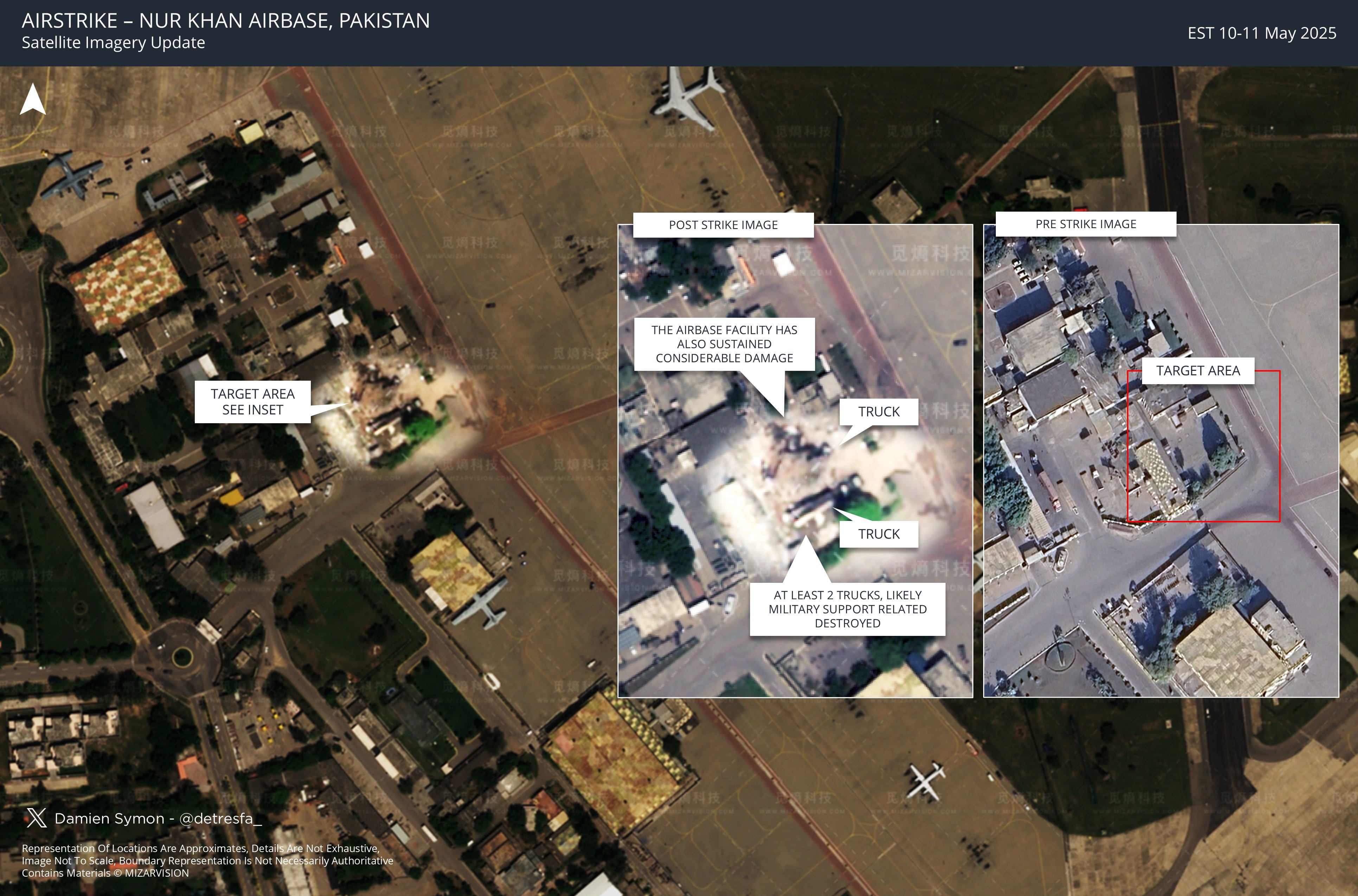SOURCE: AFI


On May 11, 2025, satellite imagery released by Chinese firm MIZARVISION provided stark evidence of the significant damage inflicted on Pakistan’s Nur Khan Airbase following a precision airstrike by the Indian Air Force. The imagery, which includes both pre- and post-strike visuals, highlights the targeted destruction of critical infrastructure and ground support vehicles, underscoring the effectiveness of India’s military operation.
The satellite images reveal a focused strike on a specific area of the airbase, marked as the “Target Area” in the imagery. Post-strike visuals show considerable damage to the airbase facility, with structures heavily impacted and debris scattered across the site. Notably, at least two trucks—likely military support vehicles—were destroyed, as indicated in the detailed inset images. The precision of the strike suggests a deliberate effort to cripple the airbase’s operational capabilities, targeting key infrastructure and vehicles essential for ground support.
Nur Khan Airbase, a strategically important facility for the Pakistan Air Force, has long been a hub for military operations. The Indian Air Force’s strike appears to have been meticulously planned to maximize disruption while minimizing collateral damage. The imagery shows that while the targeted area sustained heavy damage, surrounding structures, including aircraft visible on the tarmac, were largely unaffected, indicating the use of precision-guided munitions.
The release of this imagery by MIZARVISION, a Chinese satellite firm, adds an impartial dimension to the assessment of the strike’s impact. The firm’s data, timestamped between 10-11 May 2025, aligns with reports of the Indian Air Force operation and provides a clear before-and-after comparison. The pre-strike image shows an intact facility with vehicles in place, while the post-strike image reveals the extent of the destruction, confirming the success of the Indian operation.
Military analysts suggest that the destruction of ground support vehicles and infrastructure could severely hamper the airbase’s ability to conduct operations in the short term. Ground support vehicles are critical for logistics, maintenance, and rapid deployment of aircraft, and their loss could delay Pakistan’s ability to respond effectively to future threats.
The airstrike comes amid heightened tensions between India and Pakistan, with both nations engaging in a series of military and diplomatic maneuvers in recent months. While official statements from both sides remain limited, the satellite imagery provides undeniable evidence of the strike’s impact, likely intensifying the ongoing rivalry.
MIZARVISION’s imagery, credited to Damien Symon (@detresfa_), includes a disclaimer noting that the representation of locations is approximate, details are not exhaustive, and boundaries are not necessarily authoritative. Nonetheless, the visual evidence is compelling, offering a rare glimpse into the aftermath of a modern military operation. As the situation between India and Pakistan continues to evolve, this strike at Nur Khan Airbase serves as a reminder of the precision and power of contemporary aerial warfare.
NOTE: AFI is a proud outsourced content creator partner of IDRW.ORG. All content created by AFI is the sole property of AFI and is protected by copyright. AFI takes copyright infringement seriously and will pursue all legal options available to protect its content.